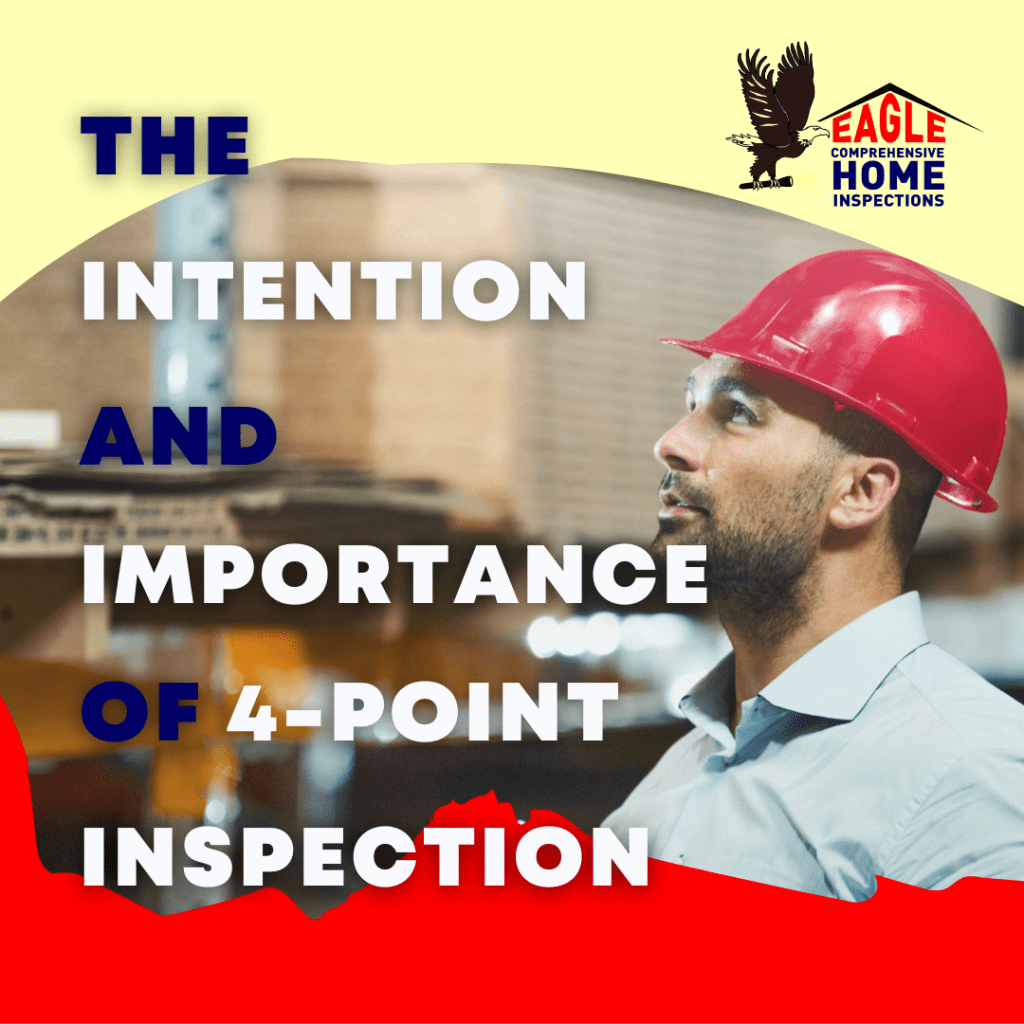When trying to purchase a home for the first time, the question “What is a 4-point inspection?” is very common. This inspection, which looks at four major systems—the roofing, electricity, plumbing, and HVAC—provides a home insurance company with a clear picture of the present state of your property. By performing this inspection, the insurance provider will be made aware of the full extent of their responsibility should coverage be granted.
Defining 4-Point Inspection
A 4-point inspection is an evaluation of the roofing, electrical, plumbing, and HVAC systems that examines the current state of a home or condominium.
Before someone may renew or be qualified for their preferred coverage plan, homeowners insurance providers require this specific inspection. Due to their increasing liability, insurance firms have more lately been reluctant to offer coverage to homes on the market that are more than 20 years old.
For instance, a homeowner looking for coverage for a house that is 30 years old might have electrical or HVAC system problems in the near future. Homeowners with insurance will probably seek compensation for these problems, which will ultimately cost insurers extra money. The outcomes of this examination are used by insurance companies to have a thorough understanding of the financial risk associated with the insured property.
Before fully committing to a mortgage, new homeowners can use this tool to determine whether the potential house is worth the investment. The four main home systems’ noticeable problems may be a sign that more hassles are coming.
There are various advantages to have one done, even if your state does not require this specific inspection:
Quick and Affordable
These inspections are well renowned for being affordable and are completed within a few hours by a qualified, licensed specialist.
Ensure the Quality of Your Real Estate
If you’re considering selling, this examination can help you determine what needs to be fixed before moving forward.
Prevent Upcoming Problems
By routinely monitoring the state of your home’s major systems, you can prevent unforeseen problems.
What Is Covered By A 4-Point Inspection?
HVAC (heating, ventilation and air conditioning)
Does your house have central heating and cooling? If so, how are the units doing and are there any noticeable leaks?
Air Conditioning, Ventilation, and Heating (HVAC)
Heating, ventilation, and air conditioning, or HVAC, is one of the most important systems since it controls the temperature in your house. If left unchecked, old or improperly installed HVAC systems increase the danger of poor air quality and dust buildup, which could result in unintended health issues.
Electrical
Are you familiar with the sort of wiring in your home? Copper, knob-and-tube, and aluminum wiring have higher fire hazard threats and are frequently uninsurable in homes.
When inspecting your electrical system, inspectors will primarily check that everything complies with code requirements. Why does this matter? The size of the system must be appropriate for the size of the house, and all electrical outlets must be correctly grounded.
Plumbing
Are your home’s pipes composed of polybutylene, which is infamous for having leak issues? Inspectors will check pipes to determine whether they are likely to rupture, which can cause water damage.
The qualified inspector will examine the drain and supply lines throughout the property, assessing their age and substance in order to look for leaks during the plumbing system inspection of the residence. In order to make sure the water heater effectively distributes water throughout the house, they will also assess its current state.
Roofing
Your roof may have visible shingle damage or fractured tiles. Inspectors will be trying to figure out how old, what kind of material, and how long the roofing system will last.
The part that is regarded as being the most thorough is the roof inspection. In addition to being essential to the construction of the entire building, a home’s roof design affects things like mold growth and energy efficiency. Home Inspectors pay particular attention to any possible health and safety issues that could endanger the residence’s construction and the security of its occupants.

